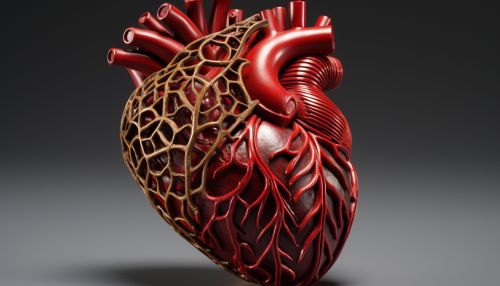Systemic circulation
Anatomy of Systemic Circulation
The anatomy of systemic circulation involves the path that oxygenated blood takes to flow from the heart to the rest of the body and back. The systemic circulation starts at the left ventricle of the heart, where oxygen-rich blood is pumped into the aorta. The aorta is the largest artery in the body and it branches off into numerous smaller arteries, arterioles, and capillaries that supply oxygen and nutrients to every cell in the body.


The blood then returns to the heart through a system of venules and veins, ending up in the superior and inferior vena cava, which empty into the right atrium of the heart. This completes the circuit of the systemic circulation.
Function of Systemic Circulation
The primary function of the systemic circulation is to deliver oxygen and nutrients to the cells of the body and to remove waste products. This is accomplished through the process of diffusion, where substances move from areas of high concentration to areas of low concentration. In the capillaries, oxygen and nutrients diffuse from the blood into the cells, while waste products like carbon dioxide diffuse from the cells into the blood.
Blood Flow in Systemic Circulation
The flow of blood in the systemic circulation is driven by the pumping action of the heart. When the left ventricle contracts, it forces blood into the aorta and through the systemic circulation. The pressure created by this contraction is known as the systolic blood pressure. The diastolic blood pressure, on the other hand, is the pressure in the arteries when the heart is at rest between beats.
Regulation of Systemic Circulation
The systemic circulation is tightly regulated by the body to ensure that adequate blood flow is maintained to all parts of the body. This is achieved through a combination of neural, hormonal, and local mechanisms. The autonomic nervous system plays a key role in this regulation, with the sympathetic nervous system increasing heart rate and blood pressure, and the parasympathetic nervous system decreasing them.
Disorders of Systemic Circulation
There are many disorders that can affect the systemic circulation, including hypertension, atherosclerosis, and heart failure. These disorders can lead to serious health problems like heart attack, stroke, and kidney failure.
